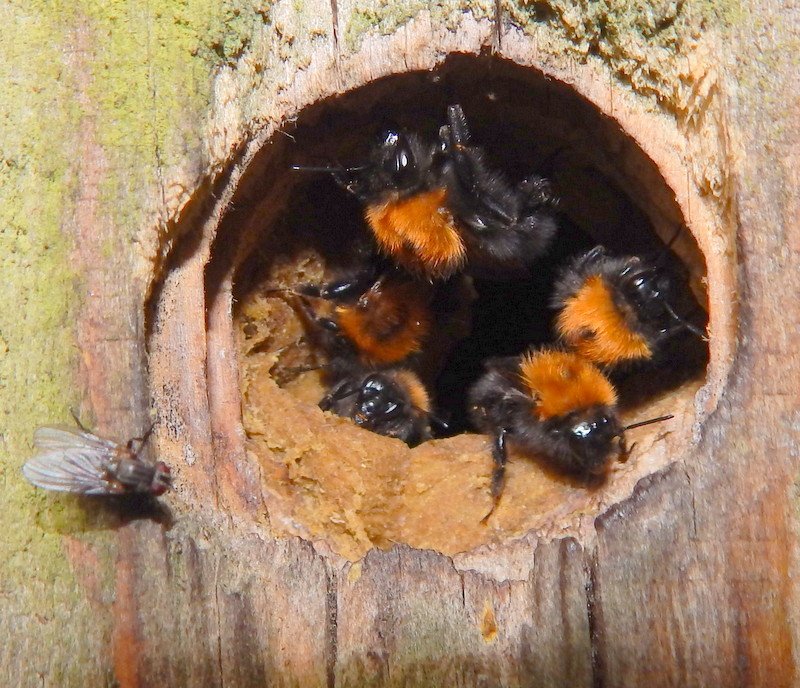
Like other bumblebees, Crotch’s bumblebees are social insects that live in annual colonies composed of a queen, workers, and reproductives. Monarchs utilize several over-wintering sites within the Los Padres National Forest and rely exclusively on milkweed to complete their life cycle. Due to its fondness for milkweed and role as a pollinator, the Crotch’s bumblebee is an important ally for another sensitive species found in the Los Padres, the Monarch butterfly. Due to these habitat preferences, the Los Padres National Forest can serve as an important haven for this rapidly declining species as its climatic and dietary needs can be fulfilled throughout the forest’s diverse landscape. It is characterized as a short-tongued species and therefore prefers certain plant species as a food source including milkweeds, dusty maidens, lupines, medics, phacelias, sages, clarkias, poppies, and wild buckwheats. Workers are active from April to August and queen bees are active for only two months from March until May.Ĭrotch’s bumblebee inhabits grasslands and shrublands and requires a hotter and drier environment than other bumblebee species. The front of the drone abdomen should have a yellow coloring, and the rest of their abdomen is expected to be predominantly black and red. The appearance of drones (males) varies slightly from queens and workers drones display yellow hair on their faces, and a black stripe mid thorax. Queens and workers (females) have a black head and face and display black color on their mid and bottom thorax and between their wing bases. The Crotch’s bumblebee can be distinguished by its square-shaped face and rounded ankle on the midleg. Due to significant declines in habitat quality, the Crotch’s bumblebee was included as an endangered species under the IUCN Red List in 2014. With a current estimated range of around 144,000 km2, the species has experienced a relative abundance decline of almost 98% over the last decade. Once ubiquitous throughout this region, today the bumblebee is absent from much of its historic range. Historically, California’s Central Valley served as a primary population center for the species.

The species occurs primarily in California, including the Mediterranean region, Pacific Coast, Western Desert, and adjacent foothills throughout most of the state’s southwestern region.

Photo by Liam O’Brian Range and DescriptionĬrotch’s bumblebee is a species of bumblebee named after the entomologist George Robert Crotch.


 0 kommentar(er)
0 kommentar(er)
